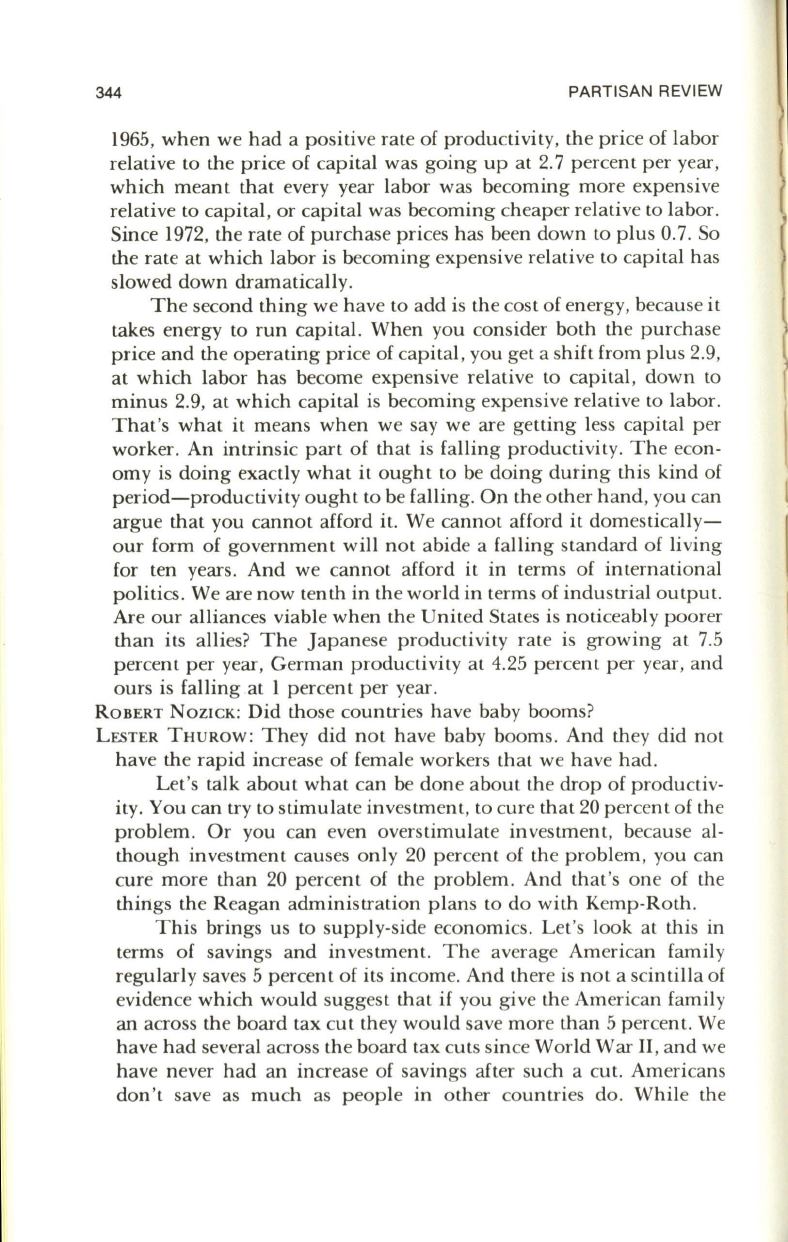
344
PARTISAN REVIEW
1965, when we had a positive rate of productivity, the price of labor
relative to the price of capital was going up at 2.7 percent per year,
which meant that every year labor was becoming more expensive
relative to capital, or capital was becoming cheaper relative to labor.
Since 1972, the rate of purchase prices has been down
to
plus 0.7. So
the rate at which labor is becoming expensive relative to capital has
slowed down dramatically.
The second thing we have to add is the cost of energy, because it
takes energy
to
run capital. When you consider both the purchase
price and the operating price of capital, you get a shift from plus 2.9,
at which labor has become expensive relative to capital, down to
minus 2.9, at which capital is becoming expensive relative to labor.
That's what it means when we say we are getting less capital per
worker. An intrinsic part of that is falling productivity. The econ–
omy is doing exactly what it ought to be doing duting this kind of
period-productivity ought
to
be falling . On the other hand, you can
argue that you cannot afford it. We cannot afford it domestically–
our form of government will not abide a falling standard of living
for ten years. And we cannot afford it in terms of international
politics. We are now tenth in the world in terms of industrial output.
Are our alliances viable when the United States is noticeably poorer
than its allies? The Japanese productivity rate is growing at 7.5
percent per year, German productivity at 4.25 percent per year, and
ours is falling at 1 percent per year.
ROBERT NOZICK: Did those countries have baby booms?
LESTER THUROW: They did not have baby booms. And they did not
have the rapid increase of female workers that we have had.
Let's talk about what can
be
done about the drop of productiv–
ity. You can try to stimulate investment,
to
cure that 20 percent of the
problem. Or you can even overstimulate investment, because al–
though investment causes only 20 percent of the problem, you can
cure more than 20 percent of the problem. And that 's one of the
things the Reagan administration plans to do with Kemp-Roth .
This brings us to supply-side economics. Let's look at this in
terms of savings and investment. The average American family
regularly saves 5 percent of its income. And there is not a scintilla of
evidence which would suggest that if you give the American family
an across the board tax cut they would save more than 5 percent. We
have had several across the board tax cuts since World War II , and we
have never had an increase of savings after such a cut. Americans
don't save as much as people in other countries do . While the


